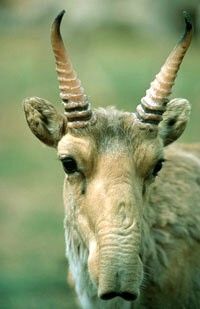Saiga antelope population declines 95% in 15 years
By Jeremy Hance In a decline on par with that suffered by the American bison in the Nineteenth Century, in the 1990s the saiga antelope of the Central Asian steppe plummeted from over one million individuals to 50,000, dropping a staggering 95 percent in a decade and a half. Since then new legislation and conservation measure have helped the species stabilize in some areas but in others the decline continues. Working for six years with the Saiga Conservation Alliance, Founding Member and Executive Secretary Elena Bykova has helped bring the species back from the very brink of extinction. “I remember the time when the saiga was hunted and traded, and we all believed that it was one of most numerous game species in Eurasia,” Bykova, a native of Uzbekistan, says, but then she and other biologists began to notice that something had gone very wrong for the species. “We visited saiga habitat in Uzbekistan under this project and were shocked: so much of the Ustyurt plateau, where saigas once lived in Uzbekistan, looked like a dinosaur cemetery. It was covered by saiga’s skulls with succise horns, skeletons, and bones – terrible vision!” … The decline of the saiga throughout Central Asia has affected the entire steppe ecosystem. … “The saiga antelope is listed as Critically Endangered on the IUCN Red List, and in the Red Data Book of Uzbekistan as the species with the fastest decline ever recorded for a mammal species. Poaching, both for meat and for its horn used in traditional Chinese medicine, has been the primary factor driving the decline of this unique nomadic mammal.” …
After declining 95% in 15 years, Saiga antelope begins to rebound with help from conservationists
